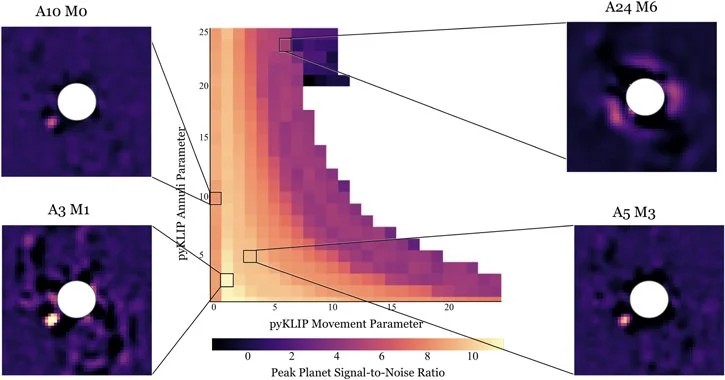Astronomers use High Contrast Imaging to detect and observe exoplanets revolving around their much brighter companion stars. Implementing these astronomical techniques on seafloor sample images collected by researchers at the Boston University Biology Laboratory, we are able to differentiate the signals of mineral grains and microbial cells.
Read MoreThe disks of gas and dusk surrounding young stars are the birthplace of planets. By studying direct images of these disks, we can gain critical insights into the formation pathways and composition of planets.
Read MoreMany of the students in the Follette Lab have a deep interest in software development and front and back-end design of computational tools. The software and tools they design are essential in streamlining everyday research operations and driving our research forward.
Read MoreAccreting protoplanets afford us the opportunity to observe planet formation in situ, and protoplanet observations inform the physics of accretion, planet formation, and disk-planet interaction.
Read MoreAccreting protoplanets afford us the opportunity to observe planet formation in situ, and protoplanet observations inform the physics of accretion, planet formation, and disk-planet interaction.
Read MoreRecent discoveries of still-forming brown dwarfs (BD) and exoplanets have placed new importance on understanding the mechanisms and environments that control the formation and evolution of substellar objects. Accretion and formation mechanisms are well understood for stars, but less so for substellar objects. The CASPAR Database compiles more than 1000 measured accretion rates from T Tauri stars, isolated BDs, and bound planetary mass companions to investigate the the formation and evolution of substellar objects.
Read MoreMuch of the dialogue surrounding effective pedagogy for college-level general education astronomy courses has been focused on how best to engender "science literacy", yet students cannot be scientifically literate without also being numerate.
Read MoreAccreting protoplanets afford us the opportunity to observe planet formation in situ, and protoplanet observations inform the physics of accretion, planet formation, and disk-planet interaction.
The Giant Accreting Protoplanet Survey (GAPlanetS) was a five year visible light high contrast imaging campaign targeting the fourteen brightest Southern Hemisphere transitional disks with the Magellan Adaptive Optics system (MagAO). The deepest and most comprehensive accreting protoplanet survey to date, GAPlanetS successfully detected two accreting stellar companions, two confirmed protoplanets, and two protoplanet candidates.
Read More








